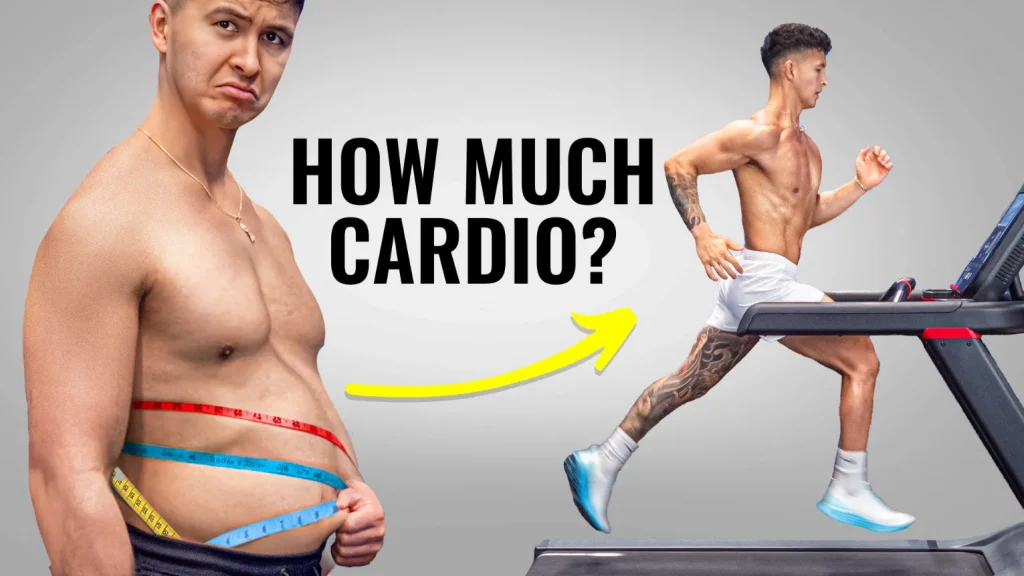Introduction
Cardio vs Strength training, which one is better? This is a question of every person who is involved in a fitness journey. But both cardio and strength training have their own unique roles. Strength training helps in building muscles and increases metabolism in the long run, on the other hand cardio burns calories fast. In this blog you will know about the pros and cons of both methods and how you can take advantage of both.
Understanding Cardio for Weight Loss

Cardio is an exercise which raises your heart rate with fast and exhaustion activities, cardio burns calories during the workout, some popular forms includes:
- Steady state cardio : Examples of this state are, Running, cycling, or swimming. Doing these exercises at a moderate or consistent phase for almost 30+ minutes
- HIIT (High-Intensity Interval Training): Doing short exercises while giving your maximum efforts. E.g. Sprints
Key benefits of cardio
- Cardio burns calories quickly. For example, 300-600 calories per hour, obviously it depends on the intensity of exercise.
- Cardio also improves heart health, immunity and endurance.
Limitations of cardio
- Overdoing cardio can lead to muscle loss so while doing cardio keep these things in mind.
- You may not see results in the short run and most of the people get demotivated by no results.
Understanding Strength Training for Weight Loss

Strength training contains resistance exercises, it mainly helps in building muscles which increases your resting metabolic rate(RMR). The more calories you burn daily will lead to more muscles, even when you are resting.
Examples includes:
- Bodyweight exercises : Bodyweight exercises include, Push-ups, Pull-ups, squats, lunges, plank.
- Weightlifting : Weightlifting exercises include external weights like, Dumbbells, resistance bands, kettlebells or barbells.
Key benefits of Strength Training
- While doing weight loss through weight training it preserves or builds lean muscle.
- Enhances body composition, there will be less fat and more muscles in your body.
Limitations of Strength Training
- While doing weight, initially there will be very slow visible growth.
- Strength Training requires progressive overload to see continuous results.
Nutrition Tips to Enhance Results

Eating is and measuring your diet is also important. Your diet should be planned according to your goal, if you want to grow muscles then you should eat more protein based food items and if your goal is losing fat then you should eat accordingly.
- Protein: There are many types of protein sources like chicken, paneer, milk, eggs.
- Hydration: Keep your body properly hydrated to maximize growth.
- Fiber: Eat fiber based foods like vegetables and oats.
Key Differences in Weight Loss Mechanisms

- Calorie burn
- Cardio : Cardo burns a lot of calories during the session
- Strength Training : Strength training burns fewer calories but it increases metabolism in the long run.
- Afterburn effect
- High intensity interval training and heavy lifting increase post workout, calorie burn even hours after workout.
- Steady-state cardio has very minimal afterburn
- Body composition :
- Cardio can help you reduce overall weight but may shrink muscles or muscle loss.
- Strength training on the other hand maintains muscles and leads to a leaner look.
Pros and Cons of Cardio

Pros of Cardio:
- Cardio improves heart health and also controls blood sugar level.
- Improved mood and mental health.
- Cardio also increases stamina and endurance
- It boosts the immune system and strengthens bones and joints.
Cons of Cardio
- Excessively doing cardio may lead to injuries. One of the best examples is runner’s knee.
- Doing cardio can increase your hunger and may lead to overeating.
- Cardio may not be time efficient for weight loss
- If you are not fueling your body properly then excessive cardio can lead to muscle loss.
Pros and Cons of Strength Training

Pros of strength training
- Strength training builds metabolism and helps in muscle building.
- Doing strength training regularly will lead to strong bones, muscles and joints.
- It also enhances functional strength for daily activities
- Strength training not only just give you muscles but also boosts your overall strength.
Cons of strength training
- Strength training includes additional weights so it requires proper form to avoid any injuries
- To see results you have to wait for a longer period.
- In strength training people have unreal body expectations and not getting expected results leads to quitting.
The Hybrid Approach: Combining Both

We can combine both cardio and strength training for maximum results like, optimal fat loss and muscle retention.
- Example weekly plan
- 3 days of strength training exercises (you can do full-body or split routines).
- 2 days of cardio exercises (e.g., 20-minute (HIIT)High intensity interval training or 45-minute of normal walk).
- 1–2 days of active recovery, recovery is also equally important to training you can do yoga and stretching for recovery.
Why it works
- Cardio creates a calorie deficit and creates room for muscles to grow.
- Strength training preserves muscles also prevents metabolic slowdowns
Combining both cardio and strength training can dramatically increase your growth.
Science-Backed Recommendations

Lets see what science have to say about this topic
- Prioritize strength training : At the start focus on strength training only like for 2-3 sessions weekly to maintain muscles.
- Use cardio strategically : Do cardio for 150 minutes of moderate intensity or 75 minutes of vigorous cardio weekly. Also consider WHO guidelines about cardio.
- Nutrition and protein intake : Eat enough protein according to your body weight (0.7-1g per pound of body weight ) and maintain a modest calorie deficit (300-500 calories/day).
Sample 4-Week Workout Plan
Day 1: Full body workout
- Squats (3 sets, 12 reps)
- Pushups (3 sets, 10 reps)
- Bent–over rows (you can use resistance bands if you don’t have access of a gym)(3 sets, 12 reps)
- Planks (3 sets, 30 seconds)
Day 2: High intensity interval training (Cardio)
- 20 minutes session
- 30 seconds of running
- Followed by 1 minute of walking
- Repeat this for 20 minutes straight
Day3 : Active Recovery
- For recovery you can do some basic yoga and stretching
Day4 : Lower body strength and core
- Lunges (3 sets, 10 reps per leg)
- Glute bridges (3 sets, 15 reps)
- Russian twists (3 sets, 20 reps)
Day5 : Steady state cardio
- Do cycle or Brick wall for almost 45 minutes
Day6 : Upper body strength
- Overhead press (You can use dumbbells if available or other substitutes like water bag school bag) (3 sets, 10 reps)
- Resistance band pull-aparts (3 sets, 10 reps)
- Tricep dips (3 sets, 12 reps)
Day7 : Now comes the important thing which most of the people skip, which is “Rest”. Dont do extra workout on rest day, let your body heal.
Tracking Progress

- Measurement :- Don’t just measure your body weight, measure other parts too.Track waist, hips and thighs,
- Photos :- To track the changes in your body, take monthly photos of yourself.
- Strength gains :- Take notes of your increase in reps, how much more weight you added and your endurance.
Example: if one wight feels easy then increase its intensity or weight
Conclusion
Cardio and strength training both are equally essential for weight loss, you can’t choose one, you have to take both of them equally. Cardio and strength training can’t be separated. You have to ride on both sides, cardio for stamina and strength training for endurance. If you want favorable outcomes then follow both cardio and strength training and be consistent with your routine and diet.
Common Myths about cardio and strength training

- Myth: Cardio is the only way to lose weight and you can’t lose weight through strength training.
- Truth : Muscles burn more calories at rest compared to while we are doing cardio – So strength training supports fat loss in the long term.
- Myth: Womens will get bulky if they lift weights
- Truth: Being bulky is biologically hard for a woman. Women’s lack the testosterone to gain massive muscles, strength training helps women to get in shape.
- Myth: You can reduce fat in a targeted area only.
- Truth: You can’t spot reduce fat, fat loss is a full body process. For example, crunches won’t melt only your belly fat, it will affect your whole body

[…] you need to know about choosing the right exercises, nutritional diet and building muscles at home.Cardio vs strength training is also an wast field, you can do research and find best suitable for […]